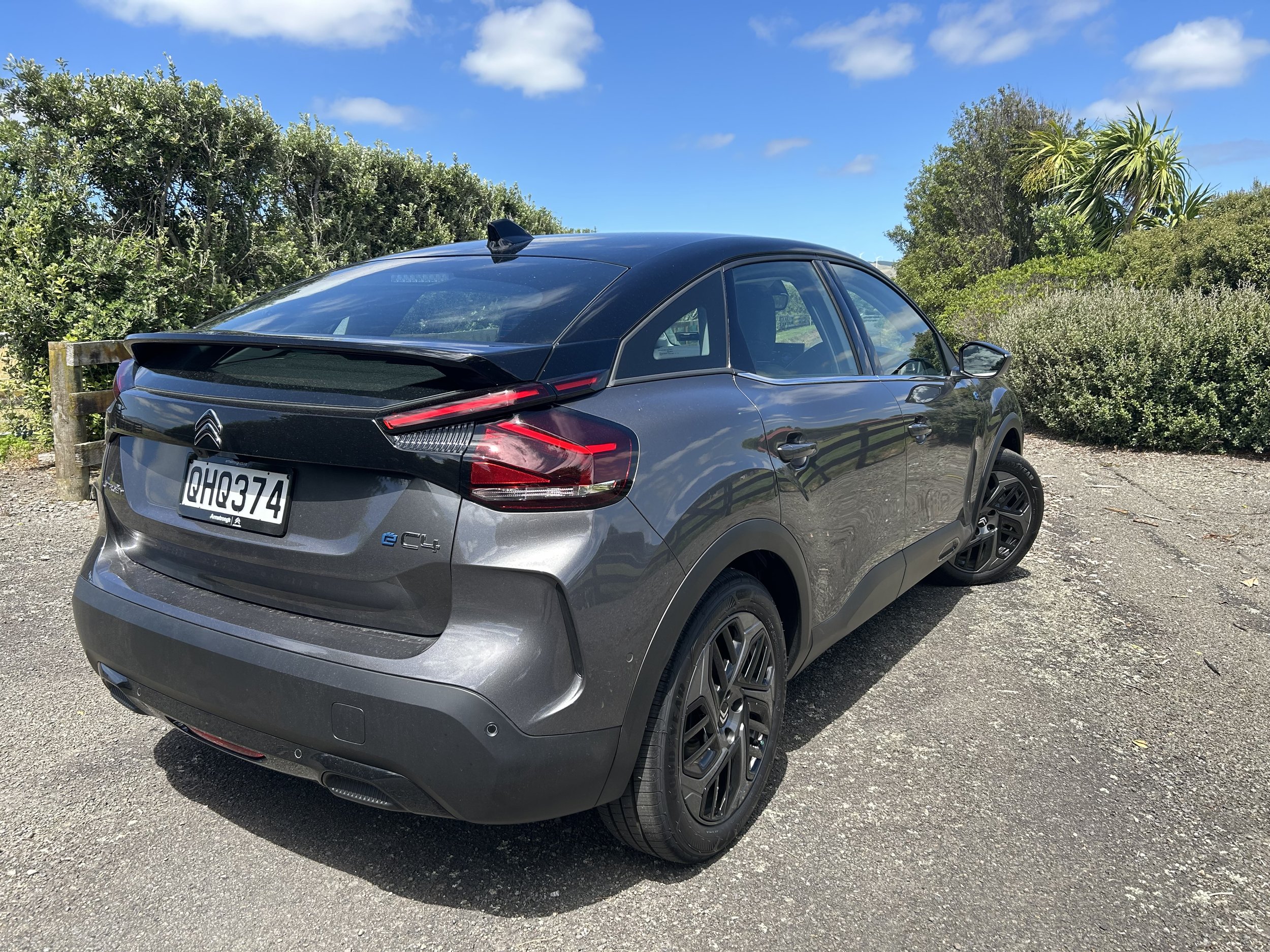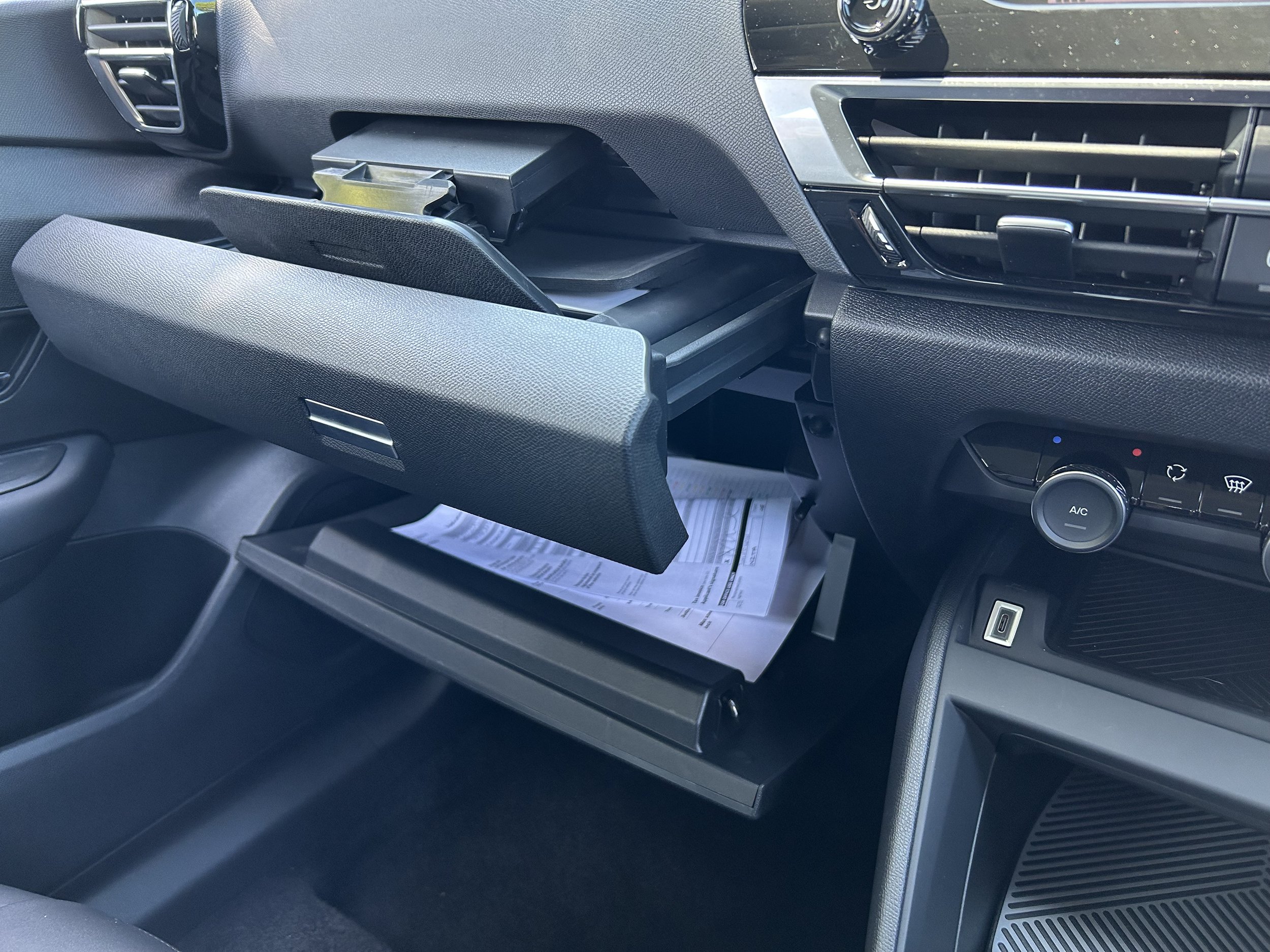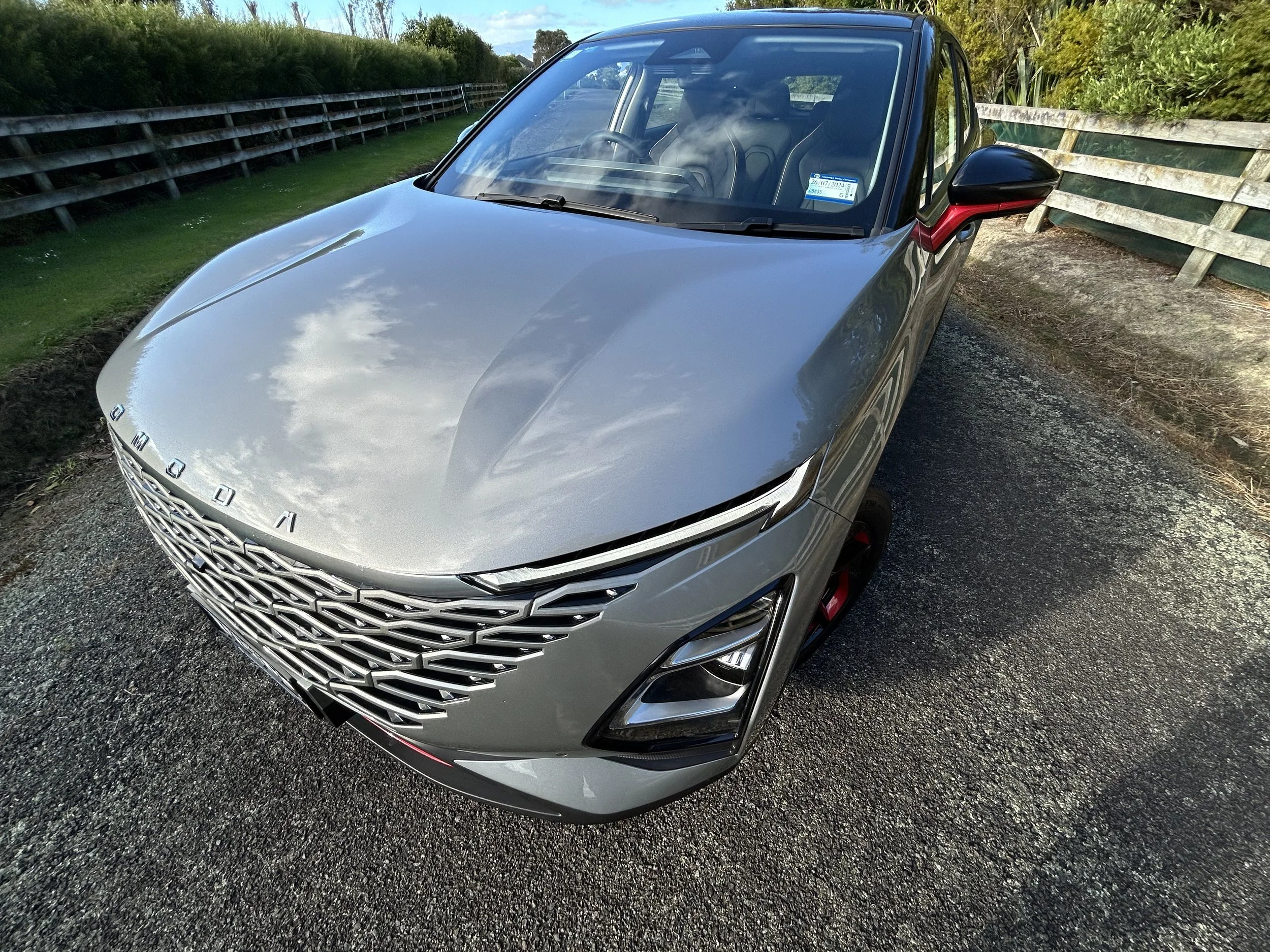Citroen e-C4 Shine roadtest review: Smooth French dressing
/Battery-included chunky crossover hatch relies on a suave ride and urban chic credential.
Price: $69,990.
Drivetrain: Permanent magnet synchronous motor, 50kWh lithium ion battery, front-wheel drive, 100kW/260Nm, single speed.
Dimensions: Length, 4360mm; width, 1800mm; height, 1520mm.
We like: Magnificent ride quality; walkaway door lock/unlock; stands out from the same old same old.
Not so much: That drawer arrangement isn’t so much quirky and plain weird; more range would raise its chances of all-round appeal.
DOESN’T matter if you have a tin foil hat tendency, an encyclopaedic knowledge of battery chemistries and feel compelled to pen angrily at least once a day on electric vehicle social media feeds - fact is, these days if you run a battery-dedicated car, you’re just a face in a crowd.
Electric being part of the establishment? It’s basically a fact. And, by the way, also a good thing. You’re still special, of course, but so are a lot of other people.
Something EV nerds and hard-outs seem to find hard to accept is that, for the transformative change battery-wed cars bring, they’re still just … cars.
In that light, then, and with all due respect to the Cybertruck, perhaps we can move on from Mars’ Attack stylings and accept that the more ‘normal’ the car, the better.
There are some benefits to driving something low-key and outwardly orthodox. Better chance of anonymity while getting on with planet-saving and setting an example to sheeple slaves to Big Oil. Frankly, who needs to be ‘person with the electric car’ who’s forever being cornered and having to defend lithium mining, battery life span expectancies and why global warning really isn’t not a myth concocted by some secret world agency of elites out to rule the world. Even though the internet says it is.
Moving on from that point, time to express another. Namely, that there are so many electrics around now, and more on the way, that establishing a genuine point of difference takes some doing.
With e-C4, there’s a clever way of doing this, that’s not immediately obvious. You won’t see it in the design or, for that matter, in how it performs.
Let’s get ‘why it is the way it is’ out of the way first. Stellantis, the global conglomerate into with DNA-linked Peugeot-Citroen and Opel all subsume, within the PSA empire (yes, confusing, but that’s the way of the world), favours a multi-powertrain strategy, which in plain English means the cars you get in electric also deliver with combustion engines. Big savings in all areas, some of which might well be passed on to the buyer.
That’s how it is with the Citroen e-C4 on test this week. It has the same platform, technology and kinds of drivetrains as the Peugeot 208/2008 and the Opel Mokka. Which means that, in addition to coming here in fully electric format, as tested here, it also represents in pump-action guise, with a 1.2-litre three-cylinder petrol engine.
It’s a good cost-saving, but how to pick the one that’s more of a planet-saver than the other is not that easy.
The C4 is cheerily overt because it’s a Citroen. It’s a good looking car, even if the shape is a little pneumatic in appearance (well, they were briefly held by Michelin). Regardless that it stands out from the usual hatchback 101, in context of Citroen’s broader history, this is a reasonably straight bat design. The double chevron integration into the grille is a nice touch and a spoiler built into the tailgate, with a glazed area beneath so rearward visibility isn't too compromised, is a touch of flair. It’s not going to be heralded as a design classic, yet has at least revived some of the cheeky character that came with the first (dancing Transformer robot) gen car and left with the second edition.
If it’s an electric, it’s also invariably a crossover these days. The e-C4’s sculpted sides, black cladding around the wheel arches and sills and big wheels are SUV-suggestive, yet it is so barely elevated I’d suggest it’s better considered a staunch-looking hatchback. France has added a e-C4 X that stands taller and looks more outdoorsy, but no word on it coming here.
As electric as it is, it’s not shouting that status. Elements that are here to distinguish this electric version from the ‘regular’ are minimal and, from my experience, easily overlooked.
Sure, the ‘e-C4’ badging will resonate with those ‘in the know’, but the supposedly ‘tell-tale’ blue accent trims inside and out were too subtle a hint for my crowd. So unless you open the fuel filler flag and see there’s a plug-in port behind it instead of a fuel filler neck, fail to notice the absence of a tailpipe and cannot see the rationale for why the gear stick is a switch … and lacks a tail pipe and you might not even realise this model is different to the internal combustion engined one.
In respect to performance, range, battery size, motor output … well, having already tried this 'EMP1' gear in the Mokka and Peugeot, which have identical outputs, I knew that the delivery here is more adequate than outstanding. You can spend as much, even less, on an alternate electric and get better.
Citroën quotes an average of 15.9kWh/100km electrical consumption, which might be a stretch in NZ conditions and range of 363km, from using the WLTP scale, sees it coming up 12km short of the Peugeot and 3km less than the Opel, which might surprise given it has the sleekest-looking shape of the three.
Rapid charging means zero to 80 percent in 30 minutes for the C4 at a fast charger. Charging at home takes just over seven hours with a wallbox, 28 hours without.
Some might see that as being a bit modest and mid-road, but best bear in mind that PSA has made no secret that it envisaged its EMP1 cars being utilised in a mainly urban-centric role, with just the occasional road trip. That’s how they are employed in Europe and have proven good enough. It’s only in New Zealand where we are whacko enough to use the likes of half-shagged Nissan Leafs on massive road trips.
the week spent with the e-C4 clocked around 400kms, during which time it received a 30 minute replenishment from 50kWh charger; primarily out of interest to see how well it did with one of those. About half the driving was in urban zones; the rest beyond.
In dynamic feel, it is a little less sharp-edged than the others on this platform, but I’d expected that. What did interest me was the response from my travelling companion; her comment on the day of returning the car was that it was a shame to see it go, because she had found it quite likeable. Because?
I’d kept to myself that, back at the local release, distributor Auto Distributors had hedged that this type might well be able to sell itself on a Citroen heritage ingredient.
In relating that the e-C4 was one of the more comfortable electric cars she had experienced, Mrs B had basically confirmed what the local agents are hoping to hear.
She’s right. Slightly iffy to downright poor ride quality is the bane of many electrics. There’s so much right about the Tesla Model Y, yet the experience is simply ruined by the jitter ride (and poor suppression of coarse chip road roar). Many Euro EVs are also a bit rigid, including the Citroen’s brand mates.
So what is it the double chevron marque gets right? Simply, it stays true to brand heritage.
Decent comfort, in seat design and ride quality, have been a Citroen credo for 100 years, and with e-C4 they’ve paid attention to getting those two elements right. Especially with the suspension.
It’s not hydropneumatic; that set-up has moved into history. The house speciality now is the Progressive Hydraulic Cushions suspension. Without going into technicalities, while hydraulic fluid is still involved, PHC is quite different to the previous methodology.
With e-C4, the setup replaces traditional hard rubber 'bump-stops' into which the suspension bashes when you use up all of its available travel, and instead uses a reservoir filled with hydraulic fluid. But it still has steel springs. So, orthodox and yet, not quite.
Citroen says it is softer than most others and will be never anything other than supple. Whether it provisions anything akin to the magic carpet ride of classic Citroens, with their 'Hydragas' fluid-filled suspension, was carefully considered during test. For me, and my primary passenger, it passed with flying colours.
What I really appreciated was how little it took from the overall dynamic side of things. The 208 and Mokka are noble little things through corners, but bump suppression isn’t wholly brilliant. The e-C4 simply soaks up ruts and the like, yet trades off minimally in cornering precision. It’s something that really should be taken into account if you’ve zoned into this corner of the market. After all, the Citroen is the same full retail as the Opel and the Peugeot is $3000 more.
It’s a bit of a shame in that, having engineered their car to feel a bit more sophisticated, they’ve also allowed the interior designer to deliver a cabin that, while reasonable for interior quality, isn’t as good overall in configuration as the others.
Everything is nicely put together, but the plastics are a little too hardy in appearance and the whole ambience is a bit dated. Cloth seats, no electric adjust for the front chairs, no inductive charging pad for the phone .. those are all risks in a $70k car with so many cheaper, primarily Chinese, competitors in the fray.
As a tall driver, it was personally pleasing none of the Peugeot-favoured ‘teensy wheel in the lap’ stuff is going on here. As in the Opel, the C4 has a normal-sized steering wheel with an everyday driving position.
It does, however, share the same instrument panel and infotainment screens that, at 5.5 and 10 inches respectively, seem a bit under-sized by today’s standard. Resolution quality of the centre console screen is poorer than Opel has. Most functions are touch-operated via this screen but, thankfully, there are shortcut buttons below for the air-con and so on.
Citroen here has taken a Shine specification that seems to be mid-spec for the C4, but is reasonably fulsome, except that it stops short of sat nav. Any wanting that will have plug in a phone and use Apple CarPlay or Android Auto, with devices replenishing by wireless charging.
A head-up display, projected via one of those mini pop-up glass screens, seems a bit old-school but it’s effective.
It wouldn’t be a Citroen without a gloriously over-engineered feature that will be damned by some for seeming pointless. In this instance it’s the multi-purpose drawers (above) in the bottom part of the dash, directly ahead of the front seat passenger and above the traditional glovebox. One of these holds a pop-out holder that allows for users to securely fit a tablet to the dashboard without affecting the safety of the front-seat passenger. It’s designed for an iPad but, problem is, when signed off those things were slightly smaller than they are now. An early type will fit, but the latest won’t. Call the whole thing an amusement, but I doubt it’ll get much use.
As per the sister electrics, there’s no traditional drive selector but, instead, it gets a small metallic toggle switch and a small button for selecting ‘park'. the driving modes tick off ‘eco’ and ‘sport’ provisions as alternates to the regular setting.
Electrics always deliver snap but the motor’s tuning seems to aim for a measured kick-in. Citroen citing 9.7 seconds for 0-100kmh suggests owners should be careful about what other EVs they throw down the gauntlet to. The performance levels are nonetheless more than adequate for the typical urban or city commute and it’s decent at 100kmh.
In spite of the sloping rear roof, there seems to be adequate headroom in the back and okay legroom. A transmission hump in the floor is a vestige of the car being based off an ICE product, so perhaps three-abreast in the back isn't going to be easy.
Boot capacity of 380 litres is class-average but the rear seats fold down to lend 1250 litres’ maximum volume, plus there’s an adjustable boot floor. What’s impressive is that Citroen has not had to sacrifice, as some makers do, any of the boot space to fit the drivetrain’s battery.
The most serious to this model on home turf is the Volkswagen Model 3, which won’t be here until the end of the year. The importer must be relieved local plans for the Renault Megane E-Tech Electric’s have been shelved. That one could have been a problem.
If the electric C4 seems too rich, then there’s a $46,990 Shine with that 114kW/240Nm 1.2-litre three-cylinder, no longer affected by CO2 penalty and lending economy of 6.8 litres per 100km, plus a 0-100kmh time 0.7 seconds quicker than the e-C4’s.






















